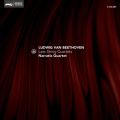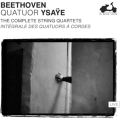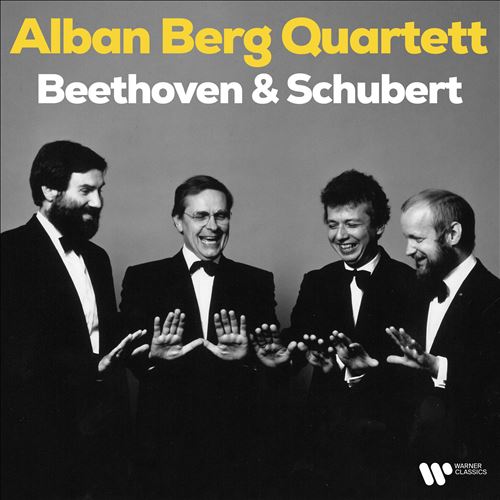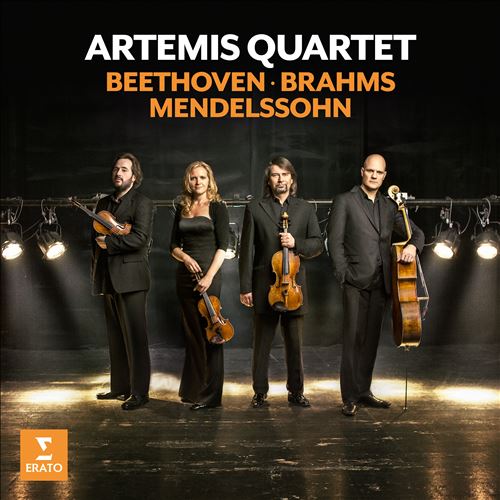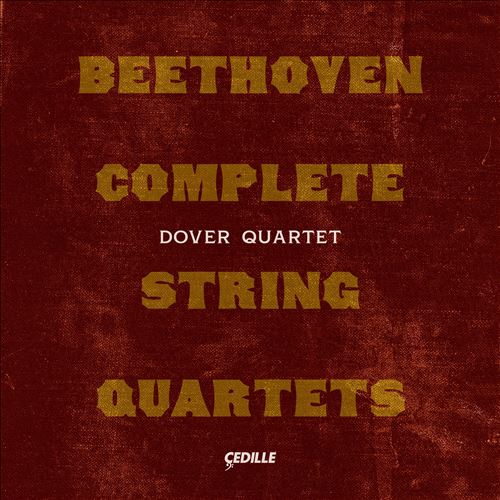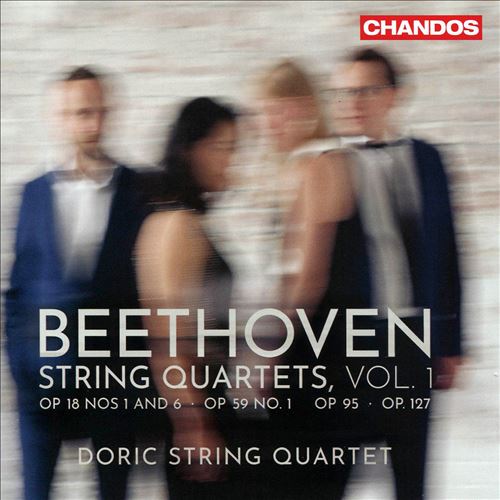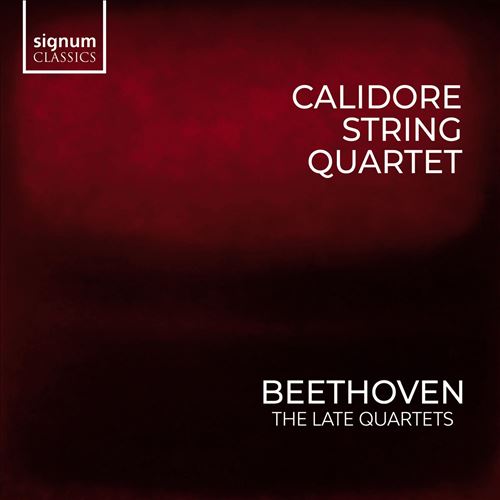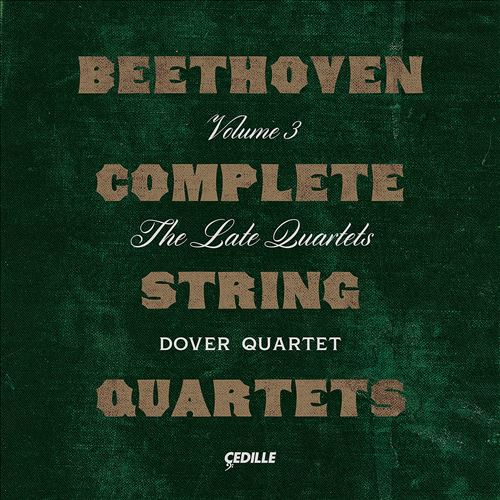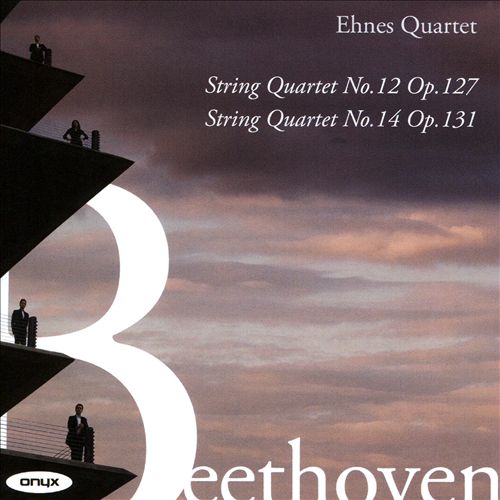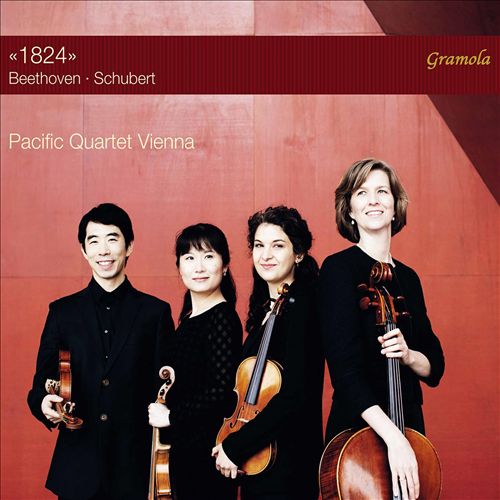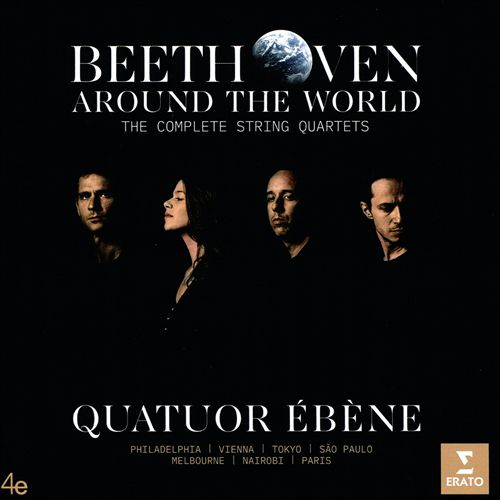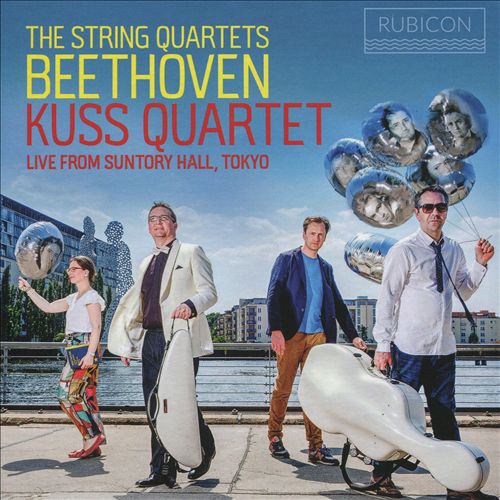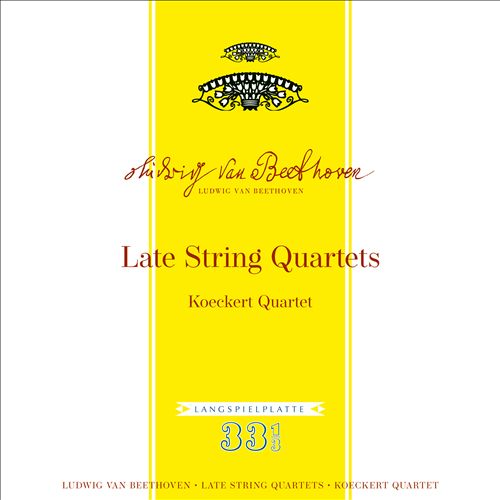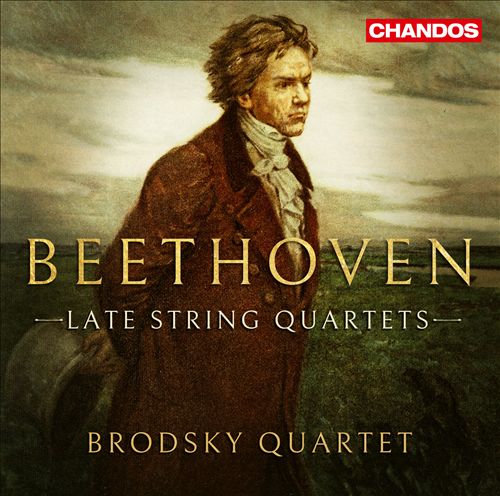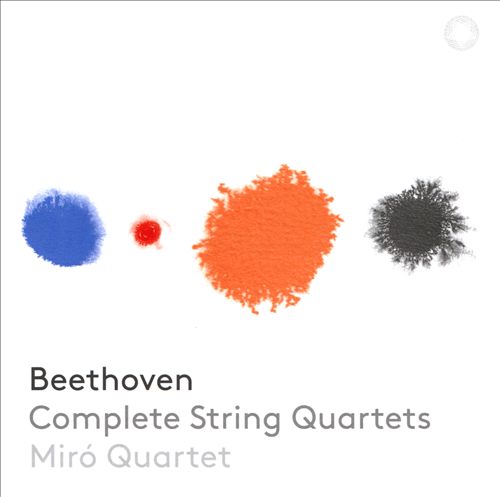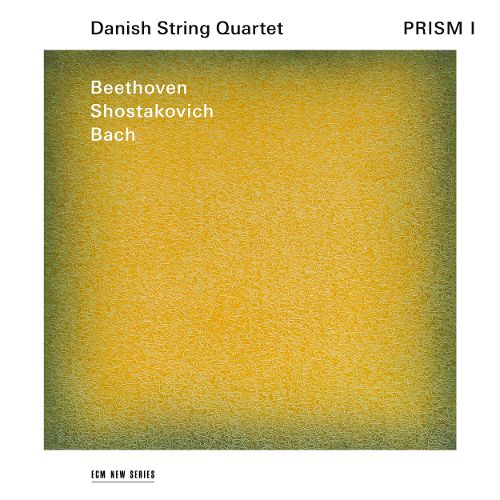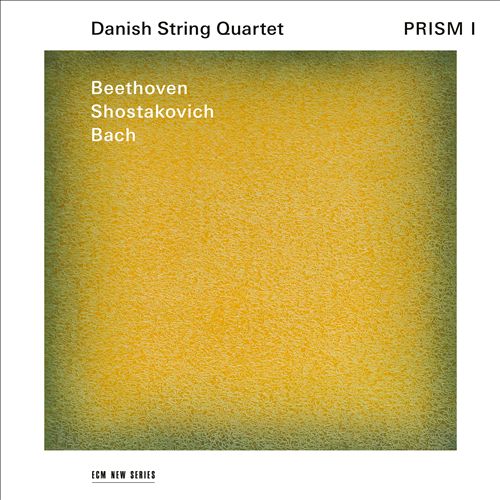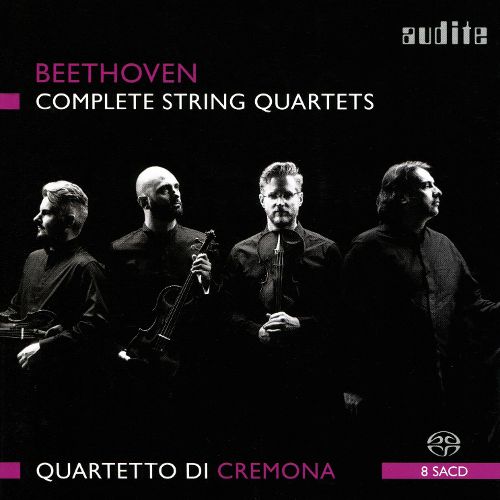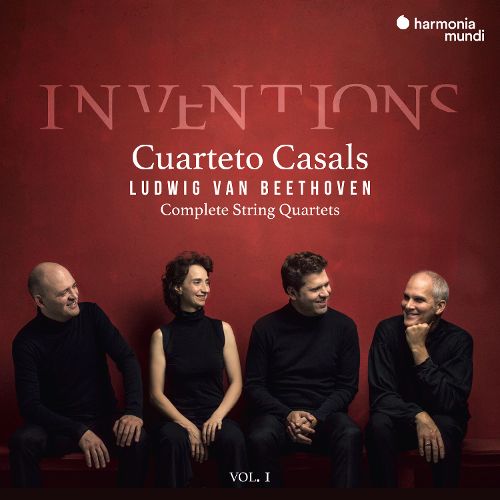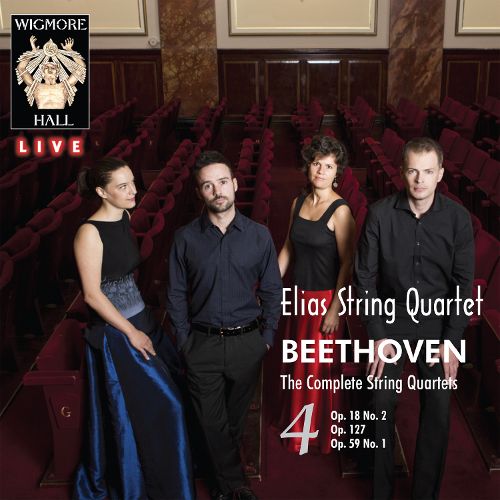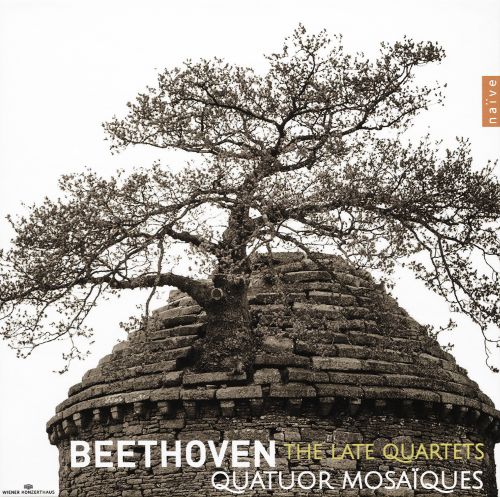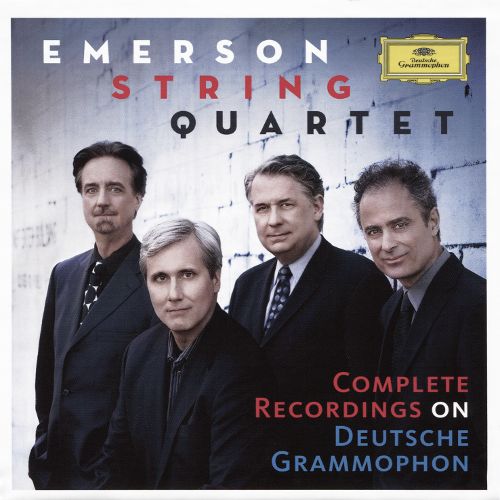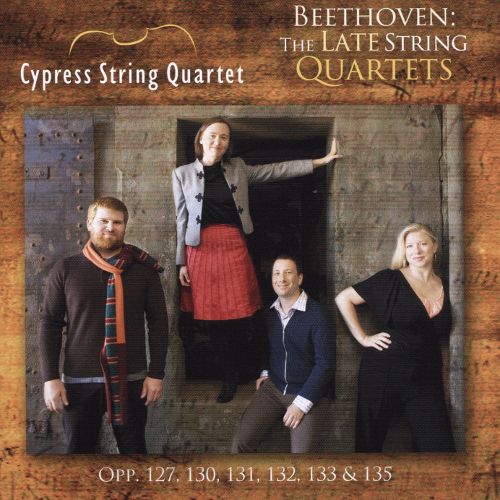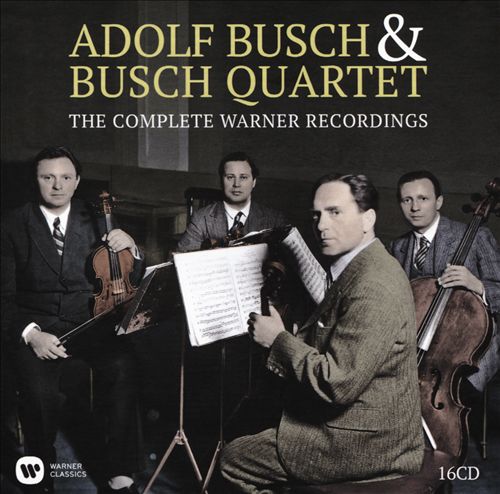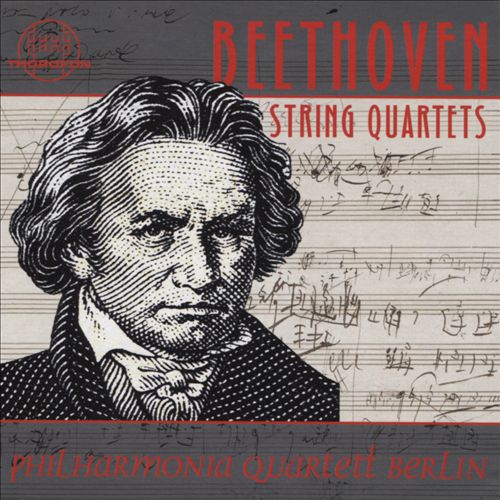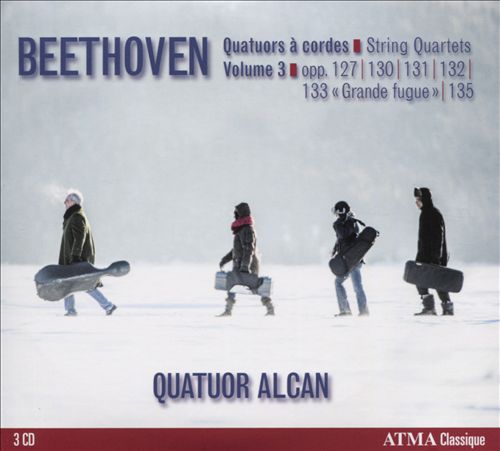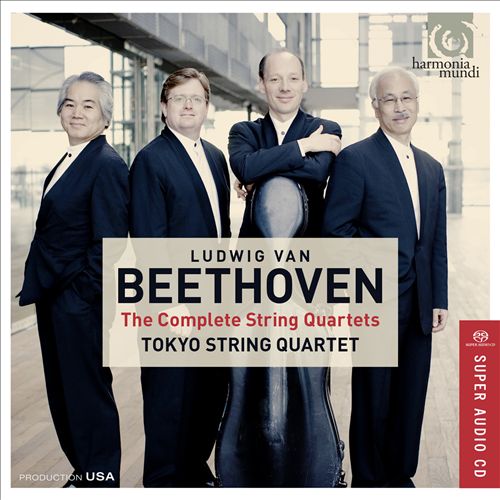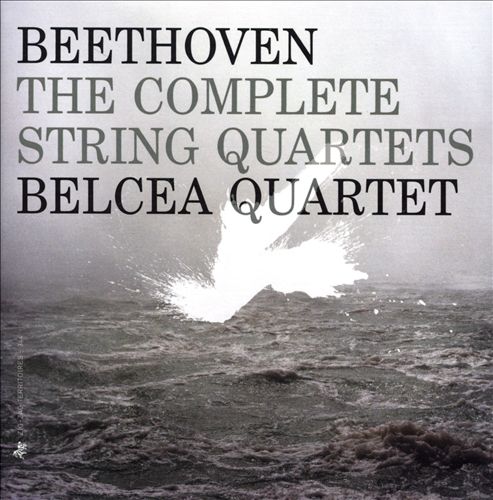Ludwig van Beethoven (루트비히 판 베토벤)
String Quartet No. 12 in E flat major, Op. 127
100
10,000
1,400
WORK INFO
작곡가: Ludwig van Beethoven (루트비히 판 베토벤)작곡년도: 1823 - 1824평균연주: 37:10악장1Maestoso - Allegro6:432Adagio, ma non troppo e molto cantabile15:293Scherzando vivace8:104Finale. Allegro - Allegro comodo6:47The String Quartet No. 12 in E♭ major, op. 127, by Ludwig van Beethoven, was completed in 1825. It is the first of Beethoven's late quartets. There are four movements:The first movement is twice interrupted – just before the development of the sonata form begins, and when that section is almost but not quite over – by recurrences of the opening's Maestoso music. The immense second movement is in the subdominant key of A♭ major. It consists of a set of six variations and a coda. The first variation is in 12/8 meter with darker harmonies and quick changes in dynamics. The second variation increases the tempo to andante con moto and adjusts the meter to 4/4. Here, the two violins engage in a dialogue over staccato accompaniment. The third variation shifts to E major, enharmonically the flat submediant, and the tempo shifts to a hymn-like adagio molto espressivo. The fourth variation returns to 12/8 and the key of A♭ by dropping a half-step from E to the dominant note (E♭). This variation has a codetta which transitions the key to D♭ major in preparation for the next variation. The fifth variation is sotto voce and has been called a "mysterious episode" and begins in D♭ major and transitions to the parallel C♯ minor. The recapitulatory sixth variation returns to 12/8, presents only half of the theme and connects directly to the coda. The penultimate variation recapitulates the theme after a contrasting section in the submediant, while the final variation restores the tonic and basic thematic material after an episode in the subdominant. Beethoven based this tonal progression on the finale of the Ninth Symphony (Op. 125) where the orchestral double fugue episode in B♭ is followed by the "grand" variation for full orchestra and choir in D major, followed by the "Seid umschlungen" episode in G major, which moves into the choral double fugue in the tonic D major.
- Maestoso ( time signature) – Allegro (3/4 time signature)
- Adagio, ma non troppo e molto cantabile (12/8 initial time signature)
- Scherzando vivace (3/4 time signature)
- Allegro (₵ time signature)
The scherzo's trio is a Presto of a kind Beethoven did not use very often, though it is similar in sound and phrasing to some of his bagatelles from the contemporary Op. 126 set. In the first, Schott, edition of 1826, the finale had no initial tempo marking (other than Finale) (and the third movement's opening indication was "Scherzo: Vivace", not "Scherzando vivace"). Beethoven initially planned two additional movements: one between the first and second, and another between the third and fourth.
- Op. 127: A♭ → E (lowered submediant) – penultimate variation → D♭ (subdominant) → final variation
- Op. 125: D → B♭ (lowered submediant) – penultimate variation → G (subdominant) → final variation
Notes
- ^ Steinberg, Michael (1994). Robert Winter, Robert Martin, ed. The Beethoven Quartet Companion. University of California Press. pp. 216–227. ISBN 0-520-08211-7.
- ^ See the Beethoven-Haus Bonn scan of the full score and parts of the first edition, as digitized and reuploaded @ IMSLP.
From WIKIPEDIA
RELEASED ALBUMS
-
Ludwig van Beethoven: Late String QuartetsMay 16, 2025
-
Beethoven: The Complete String QuartetsNovember 1, 2024
-
Beethoven & SchubertFebruary 9, 2024
-
Beethoven, Brahms, MendelssohnFebruary 2, 2024
-
Beethoven: Complete String QuartetsNovember 17, 2023
-
Beethoven: String Quartets, Vol. 1November 10, 2023
-
Beethoven: The Late QuartetsFebruary 3, 2023
-
Beethoven Complete String Quartets, Vol. 3: The Late QuartetsOctober 14, 2022
-
Beethoven: String Quartet No. 12 Op. 127; String Quartet No. 14 Op. 131September 24, 2021
-
1824: Beethoven, SchubertSeptember 3, 2021
-
Beethoven at ChristmasDecember 4, 2020
-
Classic 100 BeethovenJuly 3, 2020
-
Beethoven Around the World: The Complete String QuartetsMay 15, 2020
-
Beethoven: The String Quartets - Live from Suntory Hall, TokyoMarch 27, 2020
-
Ludwig van Beethoven: Late String QuartetsFebruary 28, 2020
-
Beethoven: Late String QuartetsJanuary 3, 2020
-
Beethoven: Complete String QuartetsNovember 15, 2019
-
Prism I: Beethoven, Shostakovich, BachSeptember 21, 2018
-
Beethoven: String Quartet No. 12, Op. 127 - 1. Maestoso - AllegroAugust 24, 2018
-
Beethoven: Complete String QuartetsJuly 6, 2018
-
Inventions: Ludwig van Beethoven - Complete String Quartets, Vol. 1July 6, 2018
-
Beethoven: The Complete String Quartets, Vol. 4January 5, 2018
-
Beethoven: The Late QuartetsNovember 3, 2017
-
Complete Recordings on Deutsche GrammophonJuly 15, 2016
-
Beethoven: The Late String Quartets, Opp. 127, 130, 131, 132, 133 & 135May 6, 2016
-
Adolf Busch & Busch Quartet: The Complete Warner RecordingsNovember 13, 2015
-
Beethoven: String QuartetsAugust 14, 2015
-
Beethoven: Quatuors à Cordes, Vol. 3May 12, 2015
-
Beethoven: The Complete String QuartetsSeptember 9, 2014
-
Beethoven: The Complete String QuartetsFebruary 14, 2014
ALBUM MUSIC
WORKS SHOUTS


